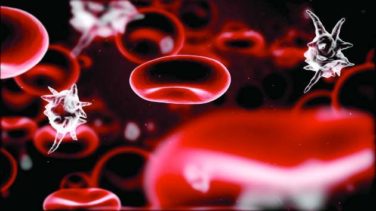A woman with a transplanted uterus gave birth to a live baby boy in Dallas, the first birth from a transplanted uterus in the United States. It is also the first birth resulting from uterine transplantation to be performed outside of Sweden, where a total of eight births have occurred.
“This really confirms that this is doable, that it can be replicated,” said Giuliano Testa, MD , chief of abdominal transplantation at Baylor University Medical Center, Dallas, during a press conference to discuss the birth.
With time, Dr. Testa said in an interview, he foresees uterine transplantation becoming a realistic alternative for some women. “It’s a great solution for the woman who really wants to carry her own pregnancy.”
“This is the best of academic medicine,” Dr. Testa said of the international collaboration and transparency among investigators working in the nascent field. “The communication is constant; we learn from each other … I am very excited about what will come in the future.”
In order to protect the privacy of the patient and her family, physicians did not disclose the patient’s name, location, or the exact date of the birth. The patient also did not wish to share the infant’s gestational age at birth or birth weight, or whether the uterus had been removed after the birth. Transplanted uteri are meant to be removed after one or two pregnancies, so the recipient doesn’t have to be on lifelong immunosuppression once the desired pregnancies have been achieved.
However, during the press conference, the surgical team shared that the mother is home and doing well, and the infant is on room air and feeding well. A video of the birth shown at the press conference showed a vernix-covered baby who began crying vigorously even before his feet were delivered during the cesarean delivery.
The transplantation, pregnancy via in vitro fertilization, and subsequent birth were accomplished as part of a 10-patient clinical trial of uterine transplantation at Baylor University Medical Center. Women aged 20-35 years with absolute uterine factor infertility, such as those with congenitally absent uteri, were eligible to participate. Donors must have had one full-term delivery and may be aged 30-65 years; menopause does not render a uterus incapable of carrying a pregnancy. Donors are able to retain their ovaries.
Another study participant at Baylor is late into her pregnancy as well, Dr. Testa said.
The extensive screening process for uterus donation ensures that the team is using “a good organ from a good donor,” said Liza Johannesson, MD, PhD . In an interview, she said that the harvest is now about a 4-5 hour open procedure that takes the uterus, the cervix, and the very superior portion of the vagina, as well as the uterine arteries and veins out to the internal iliac bilaterally. The utero-ovarian veins also are harvested.
To date, the six women who have been donors in the Baylor program have not had serious complications and have returned to their previous level of function, said Dr. Johannesson, who came to Baylor from Sahlgrenska University Hospital’s successful uterine transplantation team in Gothenburg, Sweden.
Internationally, investigators have been working to reduce morbidity for women who donate their uterus. Since the vascular tree of the uterus must also be dissected and preserved during the organ harvesting procedure, operative time is longer than for a simple hysterectomy, and there’s increased risk of urinary dysfunction because of the vessels’ intimate proximity to the ureter, Antonio R. Gargiulo, MD , said in an interview.
Dr. Gargiulo, medical director of the center for robotic surgery at Brigham and Women’s Hospital, Boston, said that the first few uterine harvest procedures took much longer, up to 10 hours. But, he said, the vascular harvest “is well within the capability of the best gynecologic oncology surgeons,” and newer techniques may further reduce the donor morbidity.
Using the utero-ovarian vein as the primary outflow tract is “a promising modification of this operation” that may be the “technical key to making this procedure the least morbid possible,” said Dr. Gargiulo, a reproductive endocrinologist who is involved with the development of a uterine transplantation program at the Brigham and Women’s Hospital.
Dr. Johannesson said that the Baylor team currently dissects the entire uterine vascular tree and reanastomoses what vessels they can. She pointed out that even with the best imaging techniques, it can be difficult to ascertain the best vessels until the surgery’s actually being performed.
All of the surgeons interviewed emphasized that each procedure represents an opportunity for growth in a young field with a steep learning curve. They expect ongoing technical advances, including the use of robotic surgery, to reduce operative time and lessen morbidity.
It’s worth pressing on in this field for the sake of the patients, said Dr. Testa, speaking for his transplant team. “We are all humbled by the depth of the desire of a woman to carry her own pregnancy.”
Dr. Johannesson said that she hopes that today when gynecologists talk to teenage patients who have absolute uterine infertility, they will be offering a message of hope. “When they meet young women, they should tell them that they shouldn’t stop hoping,” she said. “There is hope that they will be able to carry their own pregnancy.”
Dr. Gargiulo has been a paid consultant for Kawasaki Robotics and OmniGuide. Dr. Testa and Dr. Johannesson reported that they had no relevant conflicts of interest.
On Twitter @karioakes





